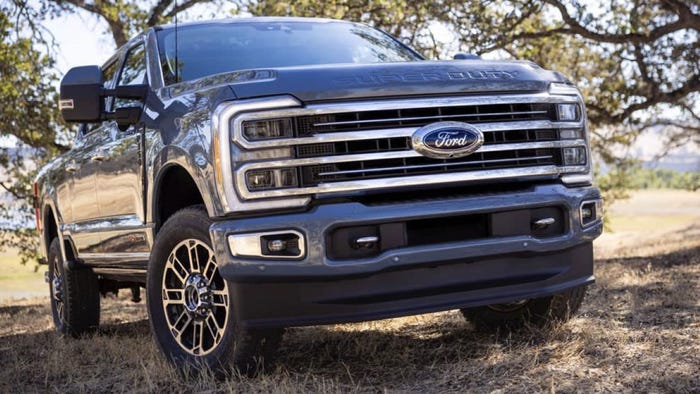Holistic Approach Key to Future Green Vehicle Interiors
In a total lifecycle assessment, a gas guzzler with a highly recyclable, environmentally friendly interior might fare better than a fuel-sipper with a conventional interior.


Special Coverage
 Auto Interiors Conference
Auto Interiors Conference

DEARBORN, MI – To marketers chagrin, notions about environmentally friendliness are changing every day.
The green image of electric vehicles gets tarnished when consumers realize the electricity used to recharge their batteries comes from coal-fired power plants. “Recyclable” products get a black eye if they seldom are recycled. And thanks to its historic oil spill, BP plc’s reputation for being a green energy company has been turned upside down.
Because eco-friendliness is an evolving concept, it poses special challenges for designers and engineers tasked with creating vehicle interiors that not only are easy on the environment, but look green as well.
Taking a holistic approach to interior design and manufacturing is the best strategy to satisfy the sometimes conflicting needs of end consumers, auto maker customers and environmentalists, say panelists at the Ward’s Auto Interiors Conference here.
Ken Gassman, engineering group manager-Inteva Products LLC, points out some years ago many auto makers shifted away from the use of vinyl in vehicle interiors because of environmental concerns about its chemical makeup.
The unintended consequence of this shift to alternative materials was that the manufacturing processes used to make them turned out to be energy intensive and environmentally dirty.
These types of tradeoffs are common and need to be addressed with processes such as total lifecycle analysis, panelists say. TLA assesses a product’s impact on the environment from manufacture to the end of its life.
TLA of a vehicle takes into account not only the carbon dioxide and pollution it produces during its operating life, but also the environmental impact of its manufacture and ultimate recycling.

Ken Gassman, Inteva Products
Vehicles now do quite well in such assessments, says Jay Hutchins, product planning manager-Faurecia North America Inc.
About 85% of vehicles by weight are recycled, leaving only 15% ending up in a landfill. That’s a better recycling rate than most other products, such as appliances, or even paper or plastic bottles, he says.
Even so, most of the non-recyclable materials are in the vehicle interior. It is possible that in a TLA assessment a gas guzzler with a highly recyclable, environmentally friendly interior might fare better than a fuel-sipper with a conventional interior, Hutchins says.
Lightweight, highly recyclable interior materials made from wood fiber, instead of plastic, are in production and available today, he adds.
The convergence of environmentalism and high fashion is presenting yet another challenge to interior designers, says Jeanette Puig-Pey, senior color and trim designer-Lear Corp.
Fashion designers now are raiding landfills and creating expensive clothing and accessories from seat fabrics taken from buses and trains built in the 1970s and 1980s. Another is making expensive handbags from reclaimed fire hoses.
Even though they are made from recycled materials, they are fun, colorful and fashionable. These trends are creating new challenges for vehicle designers because they are raising consumer expectations about how eco-friendly materials should look and demonstrating they need not appear drab and dull, Puig-Pey says.
To this end, Puig-Pey says Lear is introducing a new family of automotive fabrics made completely from recycled plastic bottles and polyester yarn that reduce landfill waste and conserve energy, yet do not represent an aesthetic compromise to designers or vehicle buyers.
About the Author(s)
You May Also Like


_(2).jpg?width=700&auto=webp&quality=80&disable=upscale)


